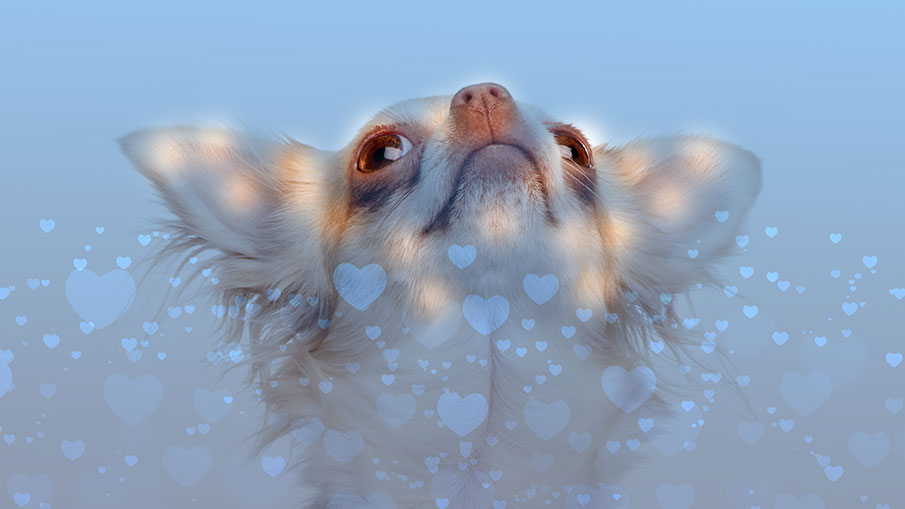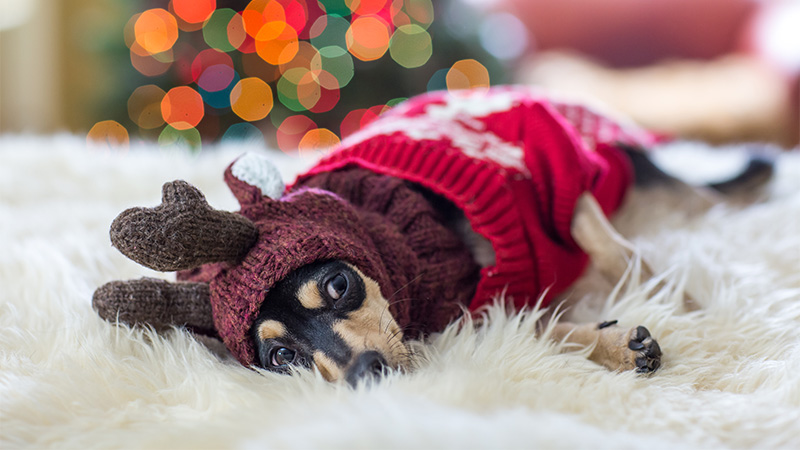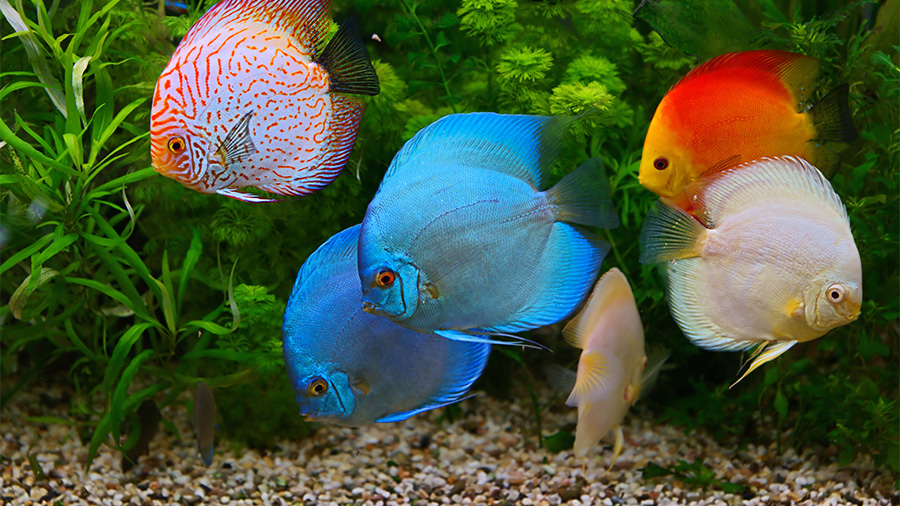Halloween may be the spookiest night of the year, but there’s no reason it needs to be the scariest. The emergency medicine team at the University of Illinois Veterinary Teaching Hospital offers advice for avoiding Halloween hazards s so your pets can enjoy their tricks and treats alike on the holiday and beyond.
Call If You Have Concerns
“On Halloween we definitely see a lot of toxicities here. Pets eat things they shouldn’t,” says Alysha McDaniel, a certified veterinary technician in the teaching hospital’s emergency room. “As soon as you notice symptoms, please call us. Calling does not necessarily mean your pet needs to come in. However, if you do come, we’ll have that much more time to get the right equipment ready for your visit.”
The Small Animal Clinic phone number is 217-333-5300.
“It also really helps to save any wrappers. We need know what they ate and how much, to get an initial idea of the dose,” she recommends.
Unfortunately, you may not find physical evidence, like chewed wrappers or chocolate-smeared guilty smiles, before symptoms start to present.
“Just one mini-size chocolate candy bar will not usually cause severe clinical signs like vomiting,” says Dr. Mara Vernier, a veterinarian who is completing a residency in small animal emergency and critical care.
She advises calling the ASPCA Animal Poison Control Hotline at 888-426-4435 with exactly what and how much your pet ate. “The experts at the ASPCA hotline can prepare you for what clinical signs may emerge and direct you toward any necessary intervention.”
It’s Not Just Chocolate
“When it comes to toxicity, chocolate’s a main concern, but an unusual amount of anything they shouldn’t be eating can cause problems,” says McDaniel. “A veterinarian needs to determine the correct treatment. Some toxins will do more damage to the stomach and esophagus lining coming back up. Your pet may need medication to prevent vomiting.”
“We do worry about candy with sugar alternatives. Xylitol (an artificial sweetener), for instance, can cause hypoglycemia and result in seizures,” notes Dr. Vernier. “Typically a lot of sugar would result in self-limiting GI upset, which is still worth a call. A veterinarian would need to see your pet if there is frequent or profuse upset.”
Unfortunately, pets are not fully in the clear when the calendar turns to November. Even small holiday treats passed under the table, if they’re extra-rich in sugar and fat, could come back to really bite.
“Sometimes after Halloween we’ll see cases of pancreatitis. Your pet may not need emergency care, but a visit to their veterinarian might be necessary to make the discomfort, vomiting, and not drinking or eating go away,” says McDaniel.
Pancreatitis means inflammation of the pancreas, the delicate organ responsible for much of the body’s digestive capabilities.
“Pets can develop inflammation a couple of days after they ate too much of something, which places unusual, significant demands on the pancreas. Pancreatitis often causes pain and vomiting, and then vomiting can add to inflammation of the pancreas. It creates a loop that requires medical intervention,” explains Dr. Vernier.
Even if your pet kept their nose clean on Halloween, remember that pumpkins may stay out on porches and lawns, along with candy dropped by butterfingered trick-or-treaters, so a little extra vigilance while on walks for the next week could really pay off.
More Halloween Hazards
Foods do not present the only Halloween hazards. There are other activities that could prove hazardous to your pet.
Be careful with open flames and waving tails. Carved pumpkins and decorative gourds are generally edible, but pets may knock associated candles over while investigating. Low-hanging strings and streamers may become chew toys for dogs and cats. If swallowed, these could become what veterinarians call “linear foreign bodies,” a potentially life-threatening issue that requires surgical removal.
Thinking of dressing you pet for the holiday? Remember that the activities surrounding Halloween may be stressful to your pet, and the added attention and physical restriction of a costume may push a normally good-natured pet past its limits. Try the costume on, ideally multiple times, before the big night to ensure that the fit doesn’t limit activity, sight, or breathing. Remove any hanging pieces that could be chewed off or could get entangled in something.
Make sure your pet’s ID tag is securely attached to a collar that is separate from the costume. It’s also a good idea to double-check with your veterinarian that scanning your pet’s microchip will lead straight to a call on your current phone number.
Safe at Home
Lastly, the emergency team advises considering your pet’s peace of mind on any holiday. Only the most sociable pets can be expected to endure the exciting (or scary) visitors and interruptions to their routine. Giving your pets the option of a quiet, safe space, well removed from the loud sights, sounds, and activities, can make all the difference in their night.
“Keeping your pets indoors and making sure they’re in a safe space in the house while the front door is opening and closing really reduces their risk of getting injured,” says Dr. Vernier. “Sadly, with all holidays, we tend to see an increase in pets escaping and getting hit by a car. So separating pets from all the excitement going on at the front door and outside can help keep them safe.”
Best of all, your pets won’t tell anyone if you sneak away and join them in their safe space for a little while.
By Matt Morton

![[dog in vampire cape before full moon]](https://vetmed.illinois.edu/wp-content/uploads/2021/10/pc-2021-halloween.jpg)


